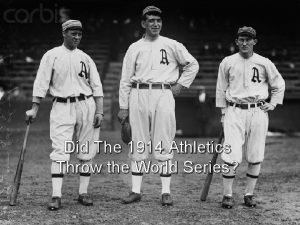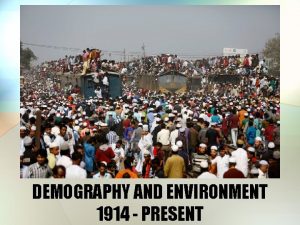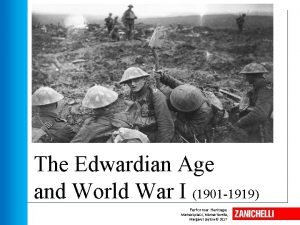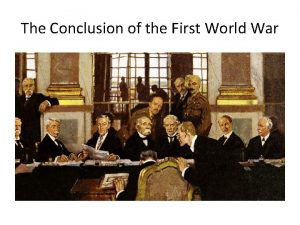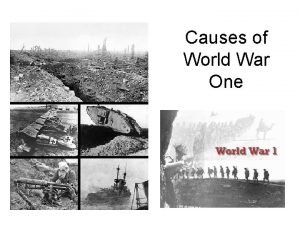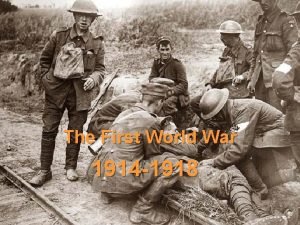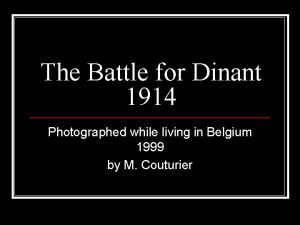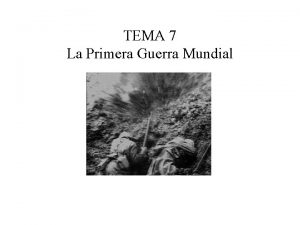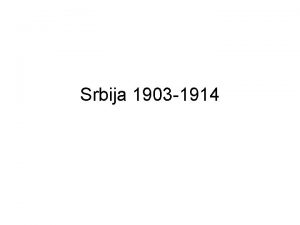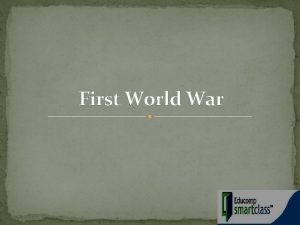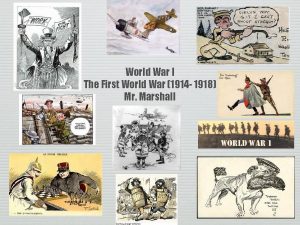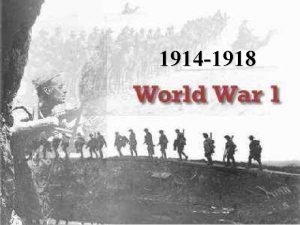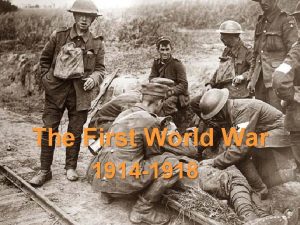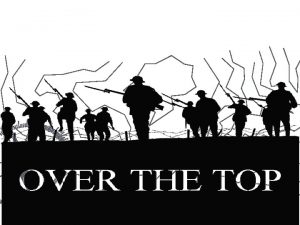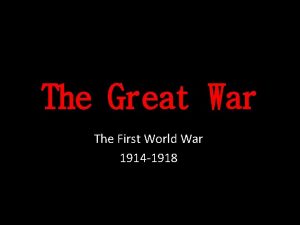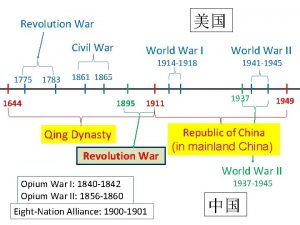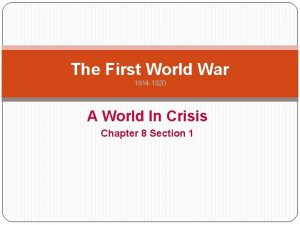THE FIRST WORLD WAR 1914 18 World War













- Slides: 13

THE FIRST WORLD WAR 1914 -18

World War One began in August 1914. It happened because of several complicated reasons including, Assassination- an important world leader was killed ! Arms race – Britain and Germany tried to out do each other by building up their naval power - most ships is the winner !

Empire – some countries liked to rule other, less powerful ones and take things from them like gold and other valuable resources – the countries being told what to do did not like it ! Alliances- some countries were friends with each other and promised to help out if one got involved in a war.

Lots of people rushed to join the army and fight. People believed it would be over by Christmas 1914. The war lasted 4 years and became one of the most terrible and horrifying wars ever fought.

Modern technology and industry meant modern weapons and war on a mass scale. Aeroplanes, machine guns, gas, bombs, tanks and barbed wire were just some of the hazards. All of this meant death, destruction and injury on a mass scale.


By the end of the war almost ONE MILLION men from the British Empire alone were killed. A further 2. 1 MILLION men were seriously injured or wounded during the war.

What story do the pictures tell ?

What happened to the survivors and the wounded? • You are going to help an injured soldier! • You are going to decide what the best possible medical care for the patient will be. • You will also have to consider what will happen to the soldiers future and how he will cope with life after the war.

Rehabilitation • Strategy was to offer rehabilitation and retraining. • Therapies included massage, electrotherapy, hydrotherapy, occupational therapy and physical exercise. • As the war progressed so did the technology in areas such as prosthetic limbs. E. g. Wooden legs weighing 9 pounds were replaced with lighter metal limbs. • There was a back log of men waiting for limbs.


Retraining • The ability of injured men to earn a living was a big concern • Men were retrained in basketry, rope making, making toys. • Others were trained in diamond cutting, poultry keeping, book repair, carpentry, piano tuning and massage. • Many schemes failed because they couldn't offer financial independence or because the occupations taught were impractical.

Who was responsible? • Government provided pensions based on rank and how the injury was gained. • Many schemes offering rehab were voluntary but state aid did partly support the schemes. • The government certainately did not organise or financially support all schemes for disabled men. • They didn’t completely abandon injured either.
 Pstuffy bunny
Pstuffy bunny Population of the world 1914
Population of the world 1914 Civil war first modern war
Civil war first modern war Edwardian age zanichelli
Edwardian age zanichelli First world war conclusion
First world war conclusion Arms race
Arms race In 1914, who controlled the shaded areas on the map?
In 1914, who controlled the shaded areas on the map? Európa térképe 1914-ben
Európa térképe 1914-ben Colonial empires 1914
Colonial empires 1914 Battle of dinant
Battle of dinant Imperialism map 1914
Imperialism map 1914 Alianzas en primera guerra mundial
Alianzas en primera guerra mundial Topovsko pitanje
Topovsko pitanje Pablo picasso 1908
Pablo picasso 1908
